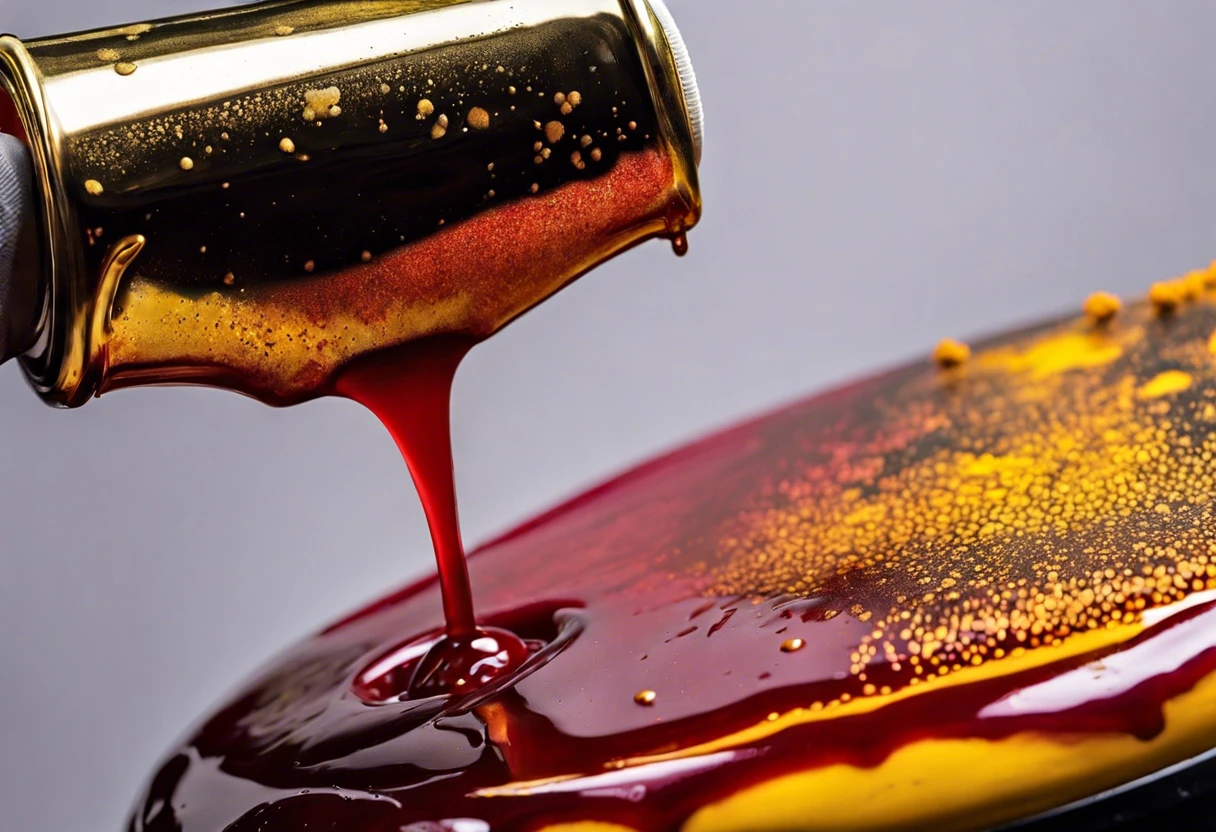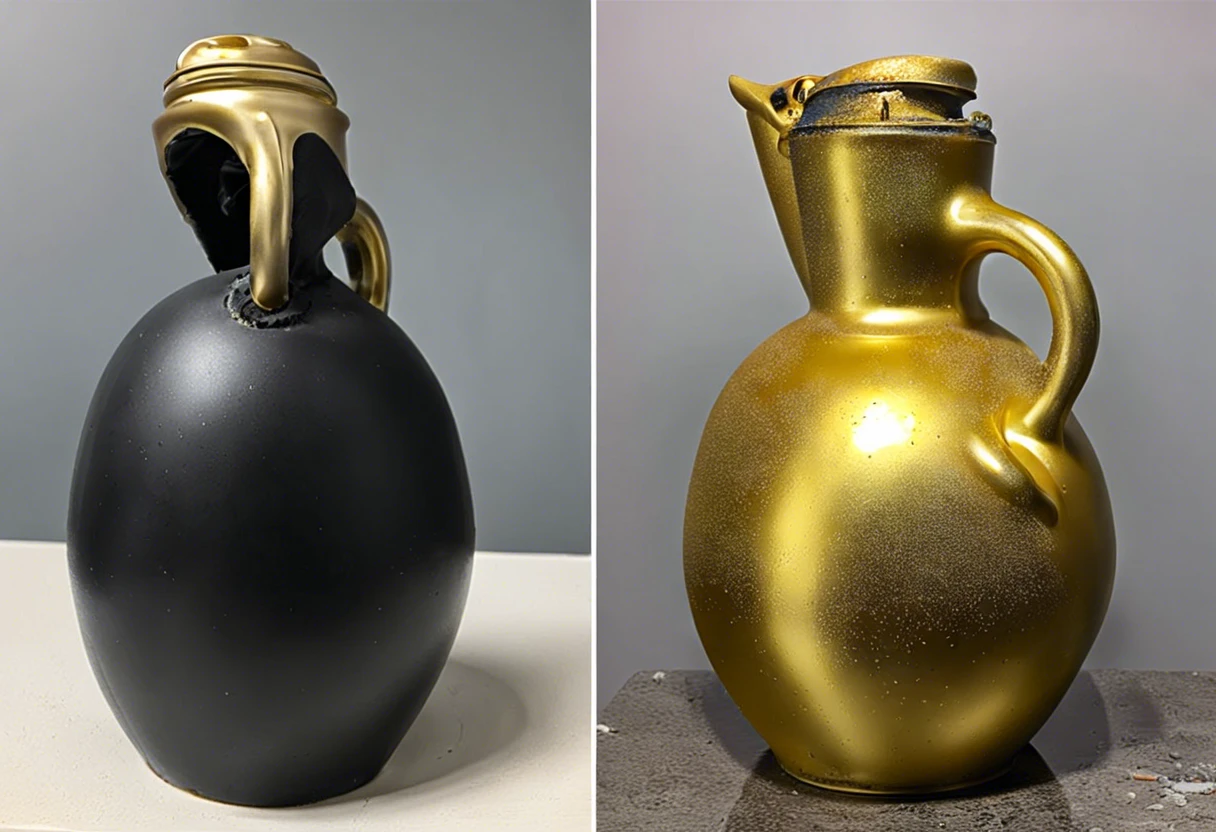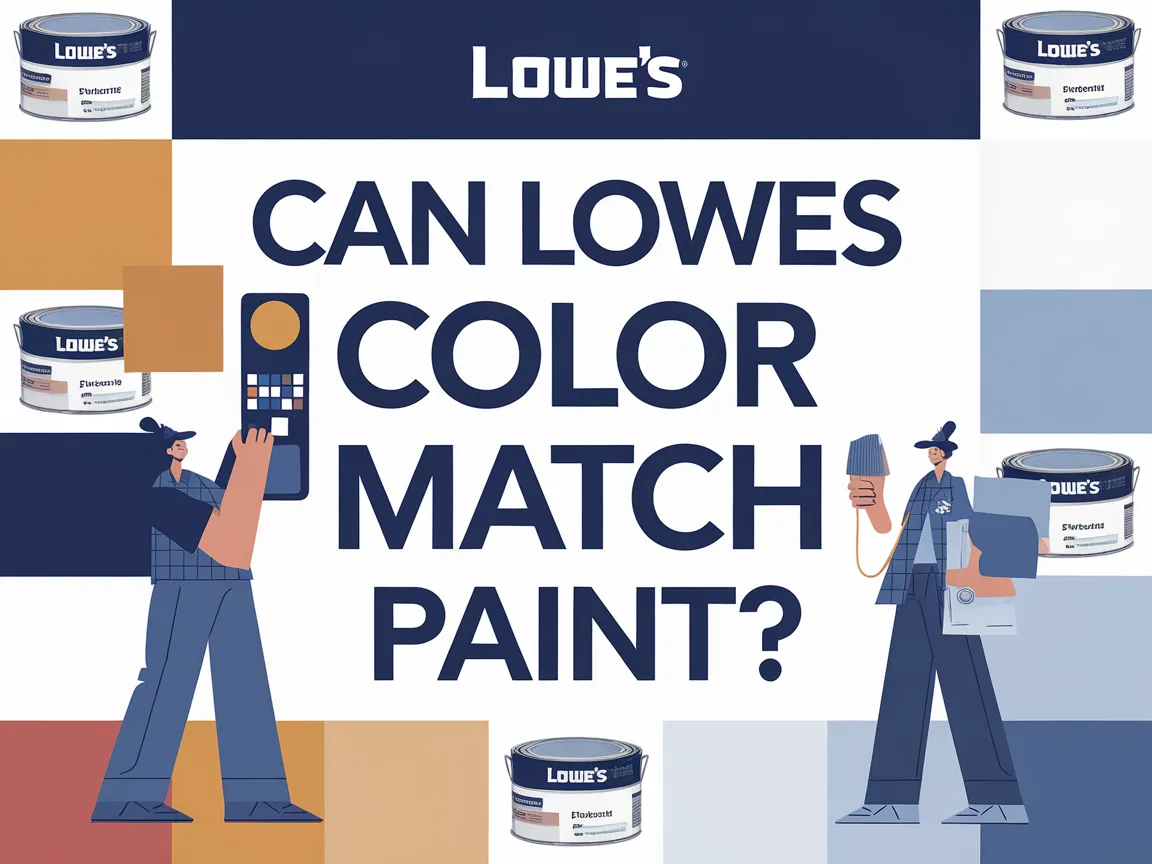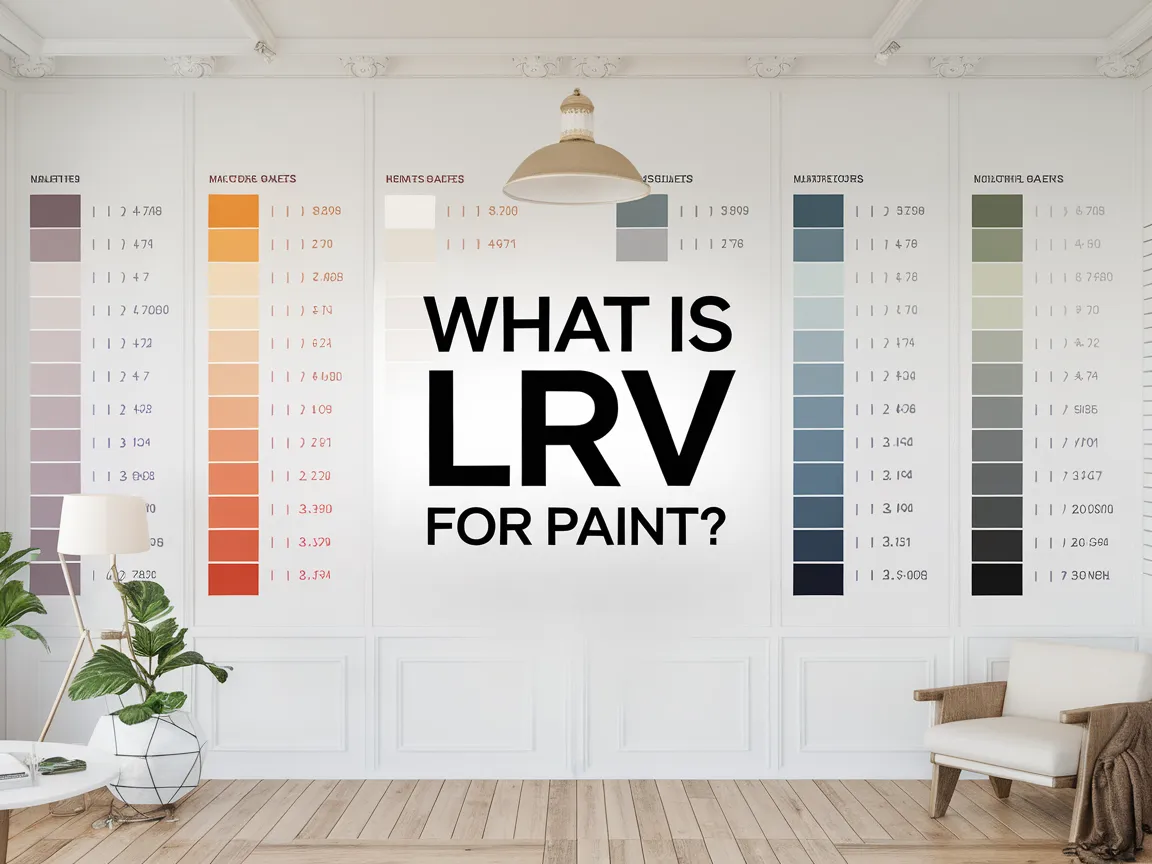Can Acetone Remove Spray Paint?
Published on: February 17, 2025 | Last Updated: January 7, 2025
Written By: Alisha Winters
Spray paint is a quick way to color things. It’s like a magic can that sprays out colors, turning plain surfaces into art!
So, can acetone remove spray paint? It’s super important because I’ve tackled messy projects before, and knowing the right remover saves time and heartache.
In this guide, I’ll cover what spray paint is, how to prep your workspace, steps to use acetone for removal, what types of paint work best, common issues, finishing touches, and even some DIY ideas. You’ll get a clear picture of using acetone to tackle that pesky spray paint!
Contents
- 1 Can Acetone Remove Spray Paint?
- 2 What is Spray Paint?
- 3 Essential Preparations Before You Start
- 4 Step-by-step Guide to Removing Spray Paint With Acetone
- 5 Types Of Spray Paint for Acetone Removal
- 6 Factors Affecting Acetone’s Effectiveness on Spray Paint
- 7 What Surfaces Can Acetone Effectively Remove Spray Paint From?
- 8 Alternatives to Acetone For Different Surfaces
- 9 Common Issues When Using Acetone to Remove Spray Paint
- 10 Common Myths About Acetone and Spray Paint Removal
- 11 Real-Life Case Studies: Acetone Spray Paint Removal
- 12 Finishing Touches After Removing Spray Paint
- 13 Frequently Asked Questions About Acetone and Spray Paint Removal
- 14 Conclusion: The Effectiveness Of Acetone in Spray Paint Removal
- 15 Additional Resources
Can Acetone Remove Spray Paint?
Yes, acetone can remove spray paint effectively. This strong solvent breaks down the paint’s bonds. Use it on hard surfaces for best results. Remember to test on a small area to avoid damage!
What is Spray Paint?
Spray paint is a type of paint stored in a pressurized can. It typically consists of pigment, solvent, and propellant, with many formulations containing around 90% solvents and gases like propane or butane as propellants. When disposing of empty spray paint cans, it’s crucial to follow proper guidelines to ensure environmental safety and safely discard paint containers.
The Finishing Touch
A freshly painted wall is a blank canvas. The best way to bring your room to life is with a single piece of statement art that ties everything together.
Browse Wall Art at Big Wall DecorI remember wondering if acetone could effectively remove spray paint from various surfaces. Have you ever faced a messy situation like that?
I’ve had friends share how it worked for them on problematic walls. We’ve often discussed how to dispose of spray paint cans safely—it’s crucial to follow local painting safety regulations since improper disposal can harm the environment. If you’re looking to explore new painting techniques, you might want to create unique blonde paint colors.
Essential Preparations Before You Start
What do you need to prepare for?
- Acetone: Get pure acetone, such as Pure Acetone 100% by Special Effects. It’s crucial for removing spray paint effectively.
- Protective Gloves: Use nitrile gloves, like H Platforms Medical Nitrile Gloves. They protect your hands from harsh chemicals and solvents.
- Ventilated Workspace: Ensure a well-ventilated area, like a garage or outdoor space, to avoid inhaling fumes from acetone and paint.
- Rags or Paper Towels: Stock up on absorbent materials, such as Bounty Paper Towels, for effective paint wiping.
- Small Container: Grab a small glass jar, like Ball Glass Jars (16 Fl Oz/475 Ml), for mixing acetone if needed. It provides a safe space for handling the substance.
We have now covered crucial preparations before starting. The next section will provide a step-by-step guide for removing spray paint with acetone.
Also See: Can You Rinse Paint Brushes in the Sink?

Step-by-step Guide to Removing Spray Paint With Acetone
Follow these steps to determine if acetone can remove spray paint effectively.
The Finishing Touch
A freshly painted wall is a blank canvas. The best way to bring your room to life is with a single piece of statement art that ties everything together.
Browse Wall Art at Big Wall Decor-
Test a Small Area
Select an inconspicuous spot to test acetone’s effectiveness. Apply a small amount of acetone using a cotton ball and observe changes for 5-10 minutes.
Check how the surface reacts. If there’s discoloration or damage, use nail polish remover, which may work better without harsh effects.
-
Apply Acetone Solution
Once you’ve confirmed it’s safe, soak the cotton ball with acetone. Gently rub it onto the spray paint for about 30 seconds.
For faster results, mist acetone directly onto the paint using a spray bottle. Control the amount to avoid dampening the surface beneath.
-
Scrub Gently
After applying acetone, use a soft brush or cloth to scrub the paint in small circular motions. This will help lift the pigment.
Be cautious—scrubbing too hard can damage the underlying surface. Depending on the paint’s thickness, you may need to repeat this step several times.
-
Rinse and Wipe Clean
After most of the paint is removed, rinse the area with warm, soapy water (Approximately 30°C or 86°F). Use plenty of water to wash away residues.
Dry with a towel or cloth. If any paint remains, repeat the scrubbing with acetone until you achieve a clean finish.
We have now covered a step-by-step guide for removing spray paint with acetone. Next, we will discuss the types of spray paint suitable for acetone removal.
Types Of Spray Paint for Acetone Removal
Let’s discuss the types of spray paint: Acrylic, Lacquer, Enamel, and Specialty.
-
Acrylic Spray Paint
Acrylic spray paint is water-based and dries quickly. Acetone isn’t effective on these, so I usually use soap and water instead.
-
Lacquer Spray Paint
Lacquer spray paint dries fast and has a high-gloss finish. Acetone effectively removes lacquer paint, making it a go-to solvent.
-
Enamel Spray Paint
Enamel paint is oil-based, providing durability for outdoor use. Acetone can thin and remove it, but it requires more effort than other types.
-
Specialty Spray Paint
Specialty spray paints include metallic and fabric options. Depending on the base, acetone may or may not work for removal.
Based on my experience, using acetone for removing lacquer spray paint is surprisingly efficient. It saves time and energy when I need a quick fix!
We’ve wrapped up the various types of spray paint suitable for acetone removal here. Let us turn our attention to the factors influencing acetone’s effectiveness.
Factors Affecting Acetone’s Effectiveness on Spray Paint
What factors determine acetone’s ability to strip away spray paint?
-
Type of Spray Paint: Different formulas react differently; some resist acetone.
-
Drying Time: Fresh spray paint is easier to remove; once cured, it clings tightly.
-
Application Thickness: Thicker layers require more effort to dissolve; be prepared for some elbow grease!
-
Surface Material: Certain surfaces absorb acetone differently; non-porous materials are often more effective.
We have now covered factors affecting acetone’s effectiveness on spray paint. Next, we will discuss surfaces acetone can effectively clean.

What Surfaces Can Acetone Effectively Remove Spray Paint From?
Understanding the surfaces acetone works on helps you plan better.
| Surface Type | Acetone Effectiveness | Notes |
|---|---|---|
| Glass | Effective | No risk of damage; acetone clears paint quickly. |
| Metal | Effective | Great for removing paint—long-lasting shine afterwards! |
| Wood | Variable | Great on bare wood; test first if there’s a finish. |
| Plastic | Poor | Can cause melting or damage; avoid where possible. |
| Fabric | Poor | Might damage fibers; consider alternatives. |
Alternatives to Acetone For Different Surfaces
In some cases, acetone isn’t the best option. Here’s a quick look at alternatives.
- Soap and Water: Best for acrylic spray paint on porous surfaces like wood.
- Vinegar and Baking Soda: Effective on delicate surfaces, especially fabrics.
- Commercial Paint Removers: Designed for specific types of paint—always check the label!
Comparison of Acetone and Alternatives
| Remover Type | Effective On | Surface Safety | Effectiveness Time |
|---|---|---|---|
| Acetone | Lacquer, Enamel | Moderate; test needed | 5-10 minutes |
| Vinegar | Acrylic | Safe | 15-30 minutes |
| Soap & Water | Acrylic | Safe | 10-20 minutes |
| Commercial Remover | Various types | Check label | Varies widely |
Common Issues When Using Acetone to Remove Spray Paint
My friend tried to remove spray paint with acetone and noticed it damaged the underlying surface. Yikes! He didn’t test it on a small area first. Always do a patch test to avoid accidents.
Use acetone (The Good Stuff) in a well-ventilated area. At 20 mL, it can lift paint efficiently, but surfaces like wood or plastic may require gentle scrubbing. Go easy!
Common Myths About Acetone and Spray Paint Removal
It’s time to bust some myths about acetone and spray paint removal. Misconceptions can lead to mistakes, so let’s clear things up!
The Finishing Touch
A freshly painted wall is a blank canvas. The best way to bring your room to life is with a single piece of statement art that ties everything together.
Browse Wall Art at Big Wall DecorMyth 1: Acetone Removes All Types of Spray Paint
Nope! While acetone works great on paints like lacquer and enamel, it struggles with acrylic spray paint. That’s mainly because acrylic is water-based, and acetone’s effectiveness dips here.
Myth 2: Using More Acetone Means Faster Results
Less is more! Over-saturating the area with acetone doesn’t speed things up. In fact, it can damage surfaces. A modest amount applied appropriately works best.
Myth 3: Acetone Leaves Behind Residues
False! Properly using acetone leaves surfaces clean—if rinsed with soapy water afterward, of course. If residues are left, it’s often due to not rinsing well.
Myth 4: Acetone Can’t Be Used on Any Surface
Not true! While it’s essential to test first, acetone is safe for hard surfaces like glass and metal. But be careful with plastics—those are a no-go.
Real-Life Case Studies: Acetone Spray Paint Removal
Let’s dive into a couple of examples where acetone played a vital role in spray paint removal.
| Case Study | Surface Type | Results | Time Taken |
|---|---|---|---|
| Old Metal Chair | Metal | Success! Acetone removed all lacquer paint. | 20 minutes |
| Wooden Cabinet | Wood | Mixed results; discolored after acetone use. | 30 minutes |
| Plastic Toy | Plastic | Failure; melted due to acetone. | N/A |
Finishing Touches After Removing Spray Paint
After completing the task, apply a quality latex or oil-based topcoat. Aim for a two-layer application, allowing four hours between coats for optimal adhesion.
Inspect the surface for any unevenness or remaining patches. Use products like Krud Kutter for thorough cleaning and ensure there’s no residue before sealing.
I’d recommend applying a clear polyurethane layer after ensuring complete cleanliness. It maximizes durability and adds elegance to the paint job.
Frequently Asked Questions About Acetone and Spray Paint Removal
Does Acetone Work on All Types Of Spray Paint?
Yes, acetone works on most types of spray paint. Spray paints made with nitrocellulose or acrylic bases respond well to acetone, which dissolves these compounds effectively.
Are There Any Surfaces I Should Avoid Using Acetone on?
Yes, you should avoid using acetone on certain surfaces. Acetone can damage plastics, varnishes, and some paints, so always test a small area first.
What Safety Precautions Should I Take When Using Acetone?
When using acetone, wear gloves and goggles for safety. Acetone is flammable and can irritate your skin and eyes, so work in a well-ventilated area.
Can I Use Alternatives to Acetone for Removing Spray Paint?
Yes, there are alternatives to acetone for removing spray paint. Products like isopropyl alcohol or commercial paint removers can be effective, depending on the spray paint type.
How Long Should I Let Acetone Sit on Spray Paint?
You should let acetone sit on spray paint for about 5 to 10 minutes. This timeframe allows the acetone to break down the paint efficiently before you scrub it away.
What Do Purple Spray Paint Marks Mean on Trees?
Purple spray paint marks on trees often signify property boundaries. Landowners or surveyors use this technique to identify areas for cutting or preservation.
What Temperature is Best for Spray Painting?
The best temperature range for spray painting is between 10°C to 32°C (50°F to 90°F). Temperatures outside this range can affect paint adhesion and drying.
How Should I Dispose Of Empty Spray Paint Cans?
You should dispose of empty spray paint cans as hazardous waste. Many local waste management facilities safely handle this type of disposal, so check with your local guidelines.
Conclusion: The Effectiveness Of Acetone in Spray Paint Removal
You made it to the end of our journey on removing spray paint. We covered what spray paint is, essential preparations, a step-by-step guide for acetone use, various types of spray paint, factors affecting acetone’s performance, common issues encountered, finishing touches after the removal, and DIY project ideas.
So, can acetone remove spray paint? Yes, it can effectively break down many types of spray paint, especially if conditions like temperature are right. If you’re looking for spray paint removal techniques, I’m here to assist. Remember, always test on a small area first for best results.
For additional resources and comprehensive guides, visit Paint Answers.
Additional Resources
- Edwards, B. (2012). Drawing on the Right Side of the Brain. New York, NY: TarcherPerigee.
- Remove Spray Paint**********!!!!!********** – Bike Forums
Experienced interior designer with 15+ years in transforming spaces, blending artistry with expertise in color and design. Rhode Island School of Design graduate, specializing in restorations and modern makeovers.
Removing, Topics









